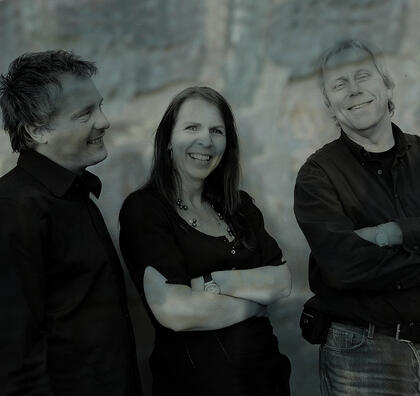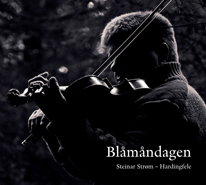![]() Telemarksavisa: Ei framføring som avslører at fire førsteplassar på Landskappleiken ikkje er tilfeldige.
Telemarksavisa: Ei framføring som avslører at fire førsteplassar på Landskappleiken ikkje er tilfeldige.
![]() Varden: Sangene framstår som tidløse
Varden: Sangene framstår som tidløse
Nationen: Enkle virkemidler, smakfulle arrangementer og mesterlig sang gjør denne til en av årets store plater.
"Eg dukkar i fortida. Eg er offensiv på mytane, mystikken – på det som ikkje er openbart i gamle forteljingar og gamle melodiar. Korleis tenkte menneska før, og kva er det som gjer at segner, myter og viser framleis lever og gir meining? Derfor er det svært viktig for meg å gripe fatt i og få fram gamle, vakre, særeigne melodiar til desse visene – viser som elles har stor utbreiing både i Noreg og Norden elles"

english
With a single exception, all the tunes on this CD were collected by Ludvig Mathias Lindeman (1812–87). The song Hagbard og Signe was transcribed by O.M. Sandvik (1875–1976) after Svein Tveiten from Hovden, Setesdal, in 1919. I’m delving into the past, trying to uncover the myths and mysteries – that which lies hidden within the old stories and songs. How did people think in the old days, and how is it that the old legends, myths and songs are still alive and meaningful, even today?
I think it’s very important to unearth old, beautiful, distinctive melodies for these song lyrics that are widely known in other forms throughout Norway and the rest of Scandinavia. Probably a lot of these tunes were discarded in favour of the nystev form that gained influence in Setesdal in the 19th century, and I was delighted to uncover two gammelstev tunes previously unknown to me. In 1861, L.M. Lindeman traveled with a horse and cart northwards through Setesdal. The previous April the Norwegian parliament had granted him a yearly sum of 300 speciedaler to collect and publish traditional music. Lindeman had previously focused on collecting material for a new book of hymns. During this period, however, researchers both in Norway and throughout Europe were mainly concerned with locating songs of great age. Songs that were traceable to the Middle Ages, the “genuine” folk ballads, were held in high esteem. The idea of an earlier, ideal state – a “Golden Age” – was central to National Romanticism, so it is hardly surprising that many of the medieval ballads are present in Lindeman’s collection. Lindeman collected a total of 166 tunes in Setesdal, meeting several of his sources at a posting inn at Åkhus in Bygland. The owner, Daniel Grundeson Åkhus (1822–1892), had two brothers who were both singers. “Ludv. M. Lindeman remained at Åkhus for some time, making local people sing him old tunes, writing them down and playing them back himself on a kind of organ he had brought with him.” (Eivind Danielsson Aakhus (1854–1937), Ættesoge s. 33), (Røynstrond, Åse 1984: Ludvig Mathias Lindeman. Samlarferd 1860 og 1861)
I have attempted to link my performances to living, breathing tradition, using the singing style I learned in Agder as a basis. Even so, a certain amount of guesswork is inevitable when working from transcripts ill-suited to representing the exact pitches and rhythms of traditional music. Most of the tunes were published with just one verse of lyrics, and so I have had to consult other variants to compete them. Many of the ballads show traces of having originally been written in Danish. It is known that Peder Syv’s Danish songbook from 1695, widely known as “The Book of Two Hundred Songs” and “The Giant Songbook”, was in common use among traditional singers from the late 18th century onwards. The songs have then been passed on orally, mixing Danish with local dialect. When this mixture is transcribed by a researcher unfamiliar with the dialect, and performed by a singer who grew up somewhere midway between Denmark and Setesdal, the resulting hybrid is bound to be something fabulously, uniquely different.
/ Ragnhild furholt


















